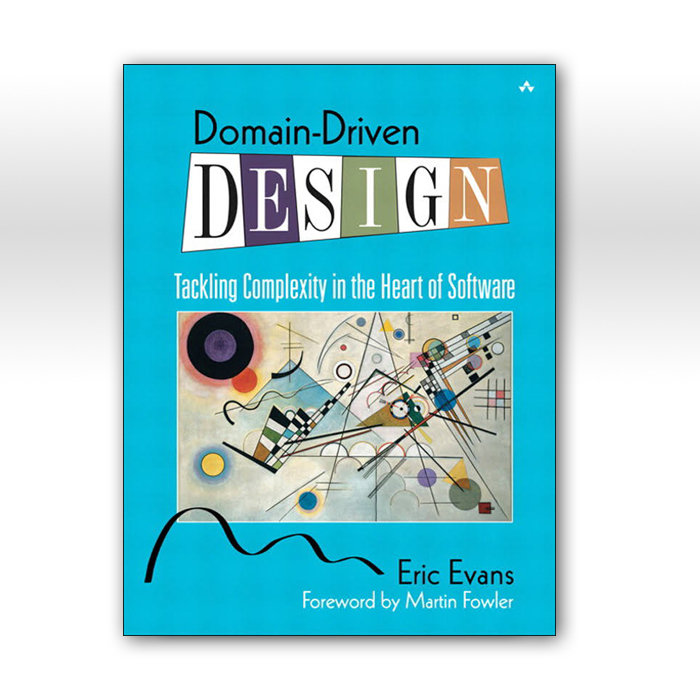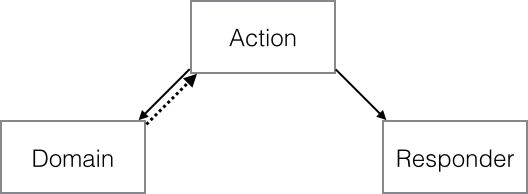Minimize the framework
...
and allow yourself some DDD
"The Blue Book"

Clean Architecture Talk
Uncle Bob Martin

Text
... I'm a big fan
My Goals
-
Make the project tell its story from first glance
- reflect this in the file structure as well
- Decouple the domain logic from I/O
- SOLID
Make the project tell its story from first glance
MVC Framework File Structure
- Console
- Controllers
- Articles
- Subscriptions
- Comments
- Helpers
- DiscountCalculator
- HeadingTrimmer
- Models
- Aricle
- Subscription
- Comment
- Services
- Views
- generate-invoices.php
Decouple the domain logic from the I/O
Post::create()
public function create($request) {
// validate the data
$this->validate($request, array(
'title' => 'required|max:255',
'slug' => 'required|alpha_dash|min:5|max:255|unique:posts,slug',
'category_id' => 'required|integer',
'body' => 'required'
));
// store in the database
$post = new Post;
$post->title = $request->title;
$post->slug = $request->slug;
$post->category_id = $request->category_id;
$post->body = Purifier::clean($request->body);
if ($request->hasFile('featured_img')) {
$image = $request->file('featured_img');
$filename = time() . '.' . $image->getClientOriginalExtension();
$location = public_path('images/' . $filename);
Image::make($image)->resize(800, 400)->save($location);
$post->image = $filename;
}
$post->save();
$post->tags()->sync($request->tags, false);
Session::flash('success', 'The blog post was successfully save!');
return redirect()->route('posts.show', $post->id);
}SOLID
We were going to:
- Create a SPA
- Make it live alongside WordPress
- Use some data stored in WordPress posts in the SPA
- Use the WordPress logged in user data
by
- Creating a WP entry page for the SPA
- Using WP's AJAX entry point
- Loading the whole WP on every request
- Masking it with adapter classes

Architecting

Started with the domain
- Organized separate elements in packages
- Introduced entry points - Use-Cases
Use Case
class SendInvoices {
public function __construct(EntityManagerInterface $em, InvoiceSender $sender) {
/* save dependecies */
}
public function execute(SendInvoicesParams $params) {
/* stuff is happening here */
}
}class SendInvoicesParams {
/* props, getters */
private function __constructor() {}
public static function fromArray(array $data) {
/* build and validate */
}
}The UI
Not GUI...
HTTP UI
- Collect values from input variables into an array
- Create params for the use case needed
- Create the use case
- Execute the use case with params object
- Serialize return value
- Send to user
NO WAY TO REPEAT THIS EVERY TIME!!!
Generic configurable request handler
[
'match' => [
'method' => 'GET',
'get.action' => 'list'
],
'useCase' => [
'className' => \Crawling\ListFoundProducts::class,
'parametersMapping' => [
'requestId' => 'get.crawlId',
'search' => 'get.search',
'page' => 'get.pageNumber',
'sort' => 'get.sort'
],
'serializer' => \UI\JsonSerializer::class
]
],
...Then added some middleware to get the user id from WP
et voilà

The cake is not a lie
Photo by Daria Shevtsova from Pexels
...but what about the command line
[
'match' => [
'command' => 'invoices-send'
],
'useCase' => [
'className' => \Billing\SendInvoices::class,
'parametersMapping' => [
'testing' => '--testing::',
'limit' => '--limit::'
],
'serializer' => UI\ConsoleSerializer::class
]
],
...It's absolutely the same!
A Recap
What we did was:
-
Create “entry” points in our domain in the form of command objects
-
Have the input to them in the form of value objects
-
Use middleware for non standard input
-
Map the relevant input from the environment to the “entry” points input
-
Execute the command
-
Serialize the return value and send it to the user
A Recap
What we achieved was:
-
A nicely layered architecture
-
A nice abstraction of the different inputs and outputs
-
Excellent separation of concerns between the domain logic and the infrastructure logic
-
Focus on the domain - the things that actually matter
-
SOLID code
-
First glance idea of the most important actions in out system
-
DDD
Action-Domain-Responder
